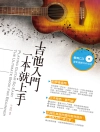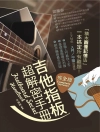Mozart’s Little Night Music is one of the most popular pieces in classical orchestra literature. The classical concert repertoire contains a wealth of works, including many other wonderful pieces. Many piano players are keen to play these works on the piano and get to know them better. The present anthology contains 60 well-known masterpieces of classical music in piano arrangements that are easy to play, yet remain as close to the original as possible. Always enjoyed by the audience, these ‘all-time favourites’ make classical masterpieces accessible to piano players. It is a ‘treasure trove’ for music lessons and hobby playing.
表中的内容
M.-A. Charpentier: Prélude from ‘Te Deum’ (H 146) – J. Pachelbel: Canon – A. Vivaldi: The Spring, op. 8/1. 1st movement – The Summer, op. 8/2. 3nd movement – The Autumn, op. 8/3. 3nd movement – The Winter, op. 8/4. 2nd movement from ‘The Four Seasons’ – J.S. Bach: Badinerie from ‘Orchestral-Suite No. 2’ B minor (BWV 1067) – Air from ‘Orchester-Suite No. 3 D major (BWV 1068) – Zion hört die Wächter singen from ‘Cantata No. 140’ – Jesus bleibet meine Freude from ‘Cantata No. 147’ – Sinfonia from ‘Cantata No. 156’ – Toccata and Fugue D minor (BWV 565) – G.F. Händel: Ombra mai fù from ‘Xerxes’ (HWV 40) – Hallelujah from ‘Messiah’ – Air from ‘Suite No. 1 F major (HWV 348) – Lascia ch’ io pianga from ‘Rinaldo’ – J. Haydn: Serenade from ‘String Quartet F major’, op. 3/5 – Symphony ‘Surprice’ G major (Hob.I: 94) 2nd movement – Gott erhalte ‘Imperial anthem’ – L. Boccherini: Menuet from ‘String Quintet, op. 13/5 – W.A. Mozart: A Little Night Music. Serenade G major (KV 525) 1st movement – Concerto for Piano and Orchestra No. 21 C major. 2nd movement – Concerto for Clarinet and Orchestra A major (KV 622) 2nd movement – Ave verum corpus (KV 618) – Lacrimosa from ‘Requiem’ (KV 626) – L.v. Beethoven: Symphony No. 5 C minor, op. 67. 1st movement – Concerto for Violin and Orchestra D major, op. 61. 1st movement – Concerto for Piano and Orchestra No. 5 Eb major op. 73. 2nd movement – Symphony No. 9 D minor op. 125 (Song of Joy) – F. Schubert: Serenade (D 957/4) – Ave Maria op. 52/6 (D 839) – Symphony No. 7 ‘Unfinished’ B minor (D 759) – F. Mendelssohn Bartholdy: Wedding March op. 61/9 – R. Schumann: Concerto for Piano and Orchestra A minor, op. 54. 1st movement – C. Gounod: Ave Maria – J. Offenbach: Cancan – Barcarolle – B. Smetana: The Moldau – J. Strauß: The Beautiful Blue Danube – Tritsch-Tratsch-Polka op. 214 – Southern Roses – A. Borodin: Polovtsian Dance No. 1 – J. Brahms: Hungarian Dance No. 5 – Lullaby op. 49/4 – C. Saint-Saens: The Swan – P.I. Tschaikowsky: Waltz of the Flowers – Symphony No. 6 B minor op. 74. 1st movement – Theme from Swan Lake – A. Dvorak: Symphony from the New World. 2nd movement – Humorsque op. 101/7 – E. Grieg: Morning Moodfrom ‘Peer-Gynt-Suite No. 1, op. 46 – Solveig’s Song from ‘Peer-Gynt-Suite No. 2, op. 55 – G. Fauré: Pavane op. 50 – Z. Fibich: Poème op. 41/6 – E. Elgar: Land of Hope and Glory op. 39/1 – G. Mahler: Adagietto from ‘5. Symphony C# minor, 4th movement’ – M. Ravel: Bolero – Pavane pour une infante défunte – C. Orff: O Fortuna from ‘Carmina Burana’ – G. Gershwin: Rhapsody in Blue
关于作者
Hans-Günter Heumann (*1955) first studied at the Hanover Musikhochschule (piano with Hans Priegnitz and Konrad Meister, composition with Einar Steen-Noekleberg, as well as music education and musicology) and then later studied composition in New York and New Orleans. As a piano teacher and composer, he has primarily focused on the publication of educational piano literature. His principal concern was to teach music in a comprehensible way and make it accessible to a large audience.
He has composed and arranged piano music in all musical genres for beginners through to advanced musicians; developed piano methods for students of all ages; and published books and sheet music editions which serve to introduce certain composers and their works using text and pictures. The large number of internationally successful publications from Schott Music reflects the approval and popularity of his work.
Drawing from his many years teaching children, young people and adults, in 1995-96 he wrote two of the most important German piano methods which were extremely well received by adult re-learners, piano teachers and pupils alike.
His Classical Piano Method as well as the multi-media piano method for children, Piano Junior, have become established publications in the English-speaking market. His best-selling German-language edition Klavierspielen – mein schönstes Hobby is also used with great success in French piano lessons under the title À vous de jouer! PIANO. His Piano Kids method and the German version of Piano Junior are also very popular in German-language lessons.
In addition to his educational piano literature, the ‘Heumann programme’ Easy Piano Music includes very easy arrangements of jazz, rock, pop, and folk music, as well as ‘composer themed editions’ with easy arrangements and original works of easy to medium difficulty. They are suitable for young and adult beginners as well as for advanced players and music lovers. These include, for example, the Get to Know Composers and Get to Know Classical Masterpieces series. Containing background information and details about the composers’ lives and a list of their most important works, including contemporary colour illustrations, they provide easy access to the respective composer and whet the musician’s appetite to expand their piano playing repertoire. The volume Piano Classics – The most beautiful piano pieces from Bach to Satie – contains a special selection of works for lovers of piano music.
In 2011 he published Live Your Dream, a book with his own compositions which were inspired by spiritual aphorisms. He also composed pop melodies for beginner’s lessons which are included in editions like Fantasy Piano, Mystery Piano or Piano Playground.
Hans-Günter Heumann now works as a freelance composer and author and lives in South Germany.












